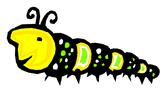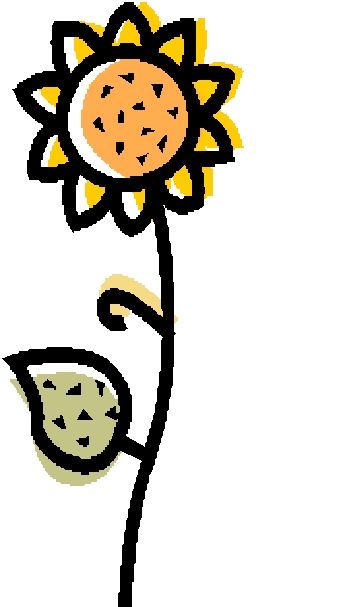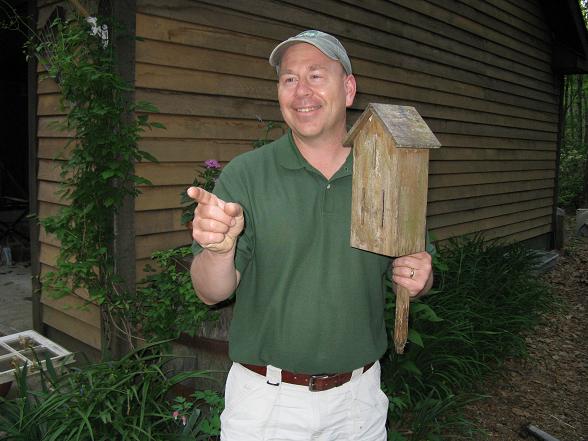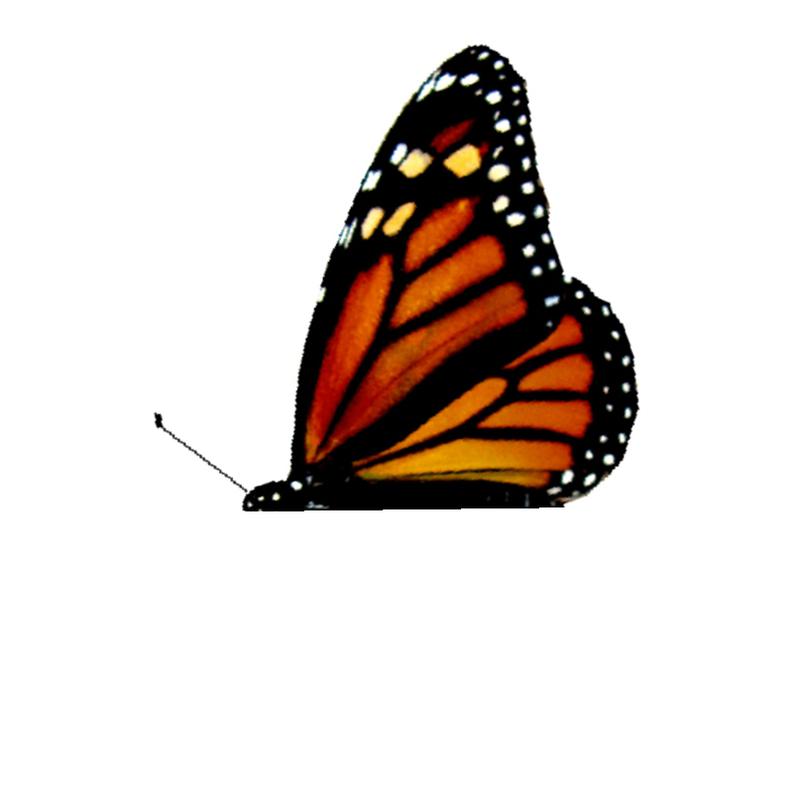C
There are many simple things you can do in
your own back yard that will invite
and protect pollinators!
- Plant plenty of nectar- and pollen-rich flowers.
By choosing a variety of colors and shapes you can attract
hummingbirds and nectar seeking insects. Extend the blooming
season by planting flowers that will bloom at varying times of the year.
- Provide food sources (host plants) and overwintering places for
- eggs and larvae.
Although adult pollinators rely on nectar and pollen to sustain them, the insect larval stage is often quite particular about which leaves it eats. Monarch Caterpillars, for example, will ONLY eat
milkweed. Don't forget to invest in host plants as well as nectar blossoms.
- Provide water.
Butterflies and other insects will sip at mud puddles and bird baths. Additionally, mud puddles provide minerals for some pollinators, such as butterflies, and provides building supplies for insects which make their homes out of mud.
- Avoid using pesticides and herbicides.
Some "weeds" provide a food source, both pollen and nectar, for pollinators. If you feel you MUST control weeds and pests, choose organic home remedies. Use them after dark after the pollinator insects have gone to bed.
- Provide sites and materials for nesting and overwintering.
While the Monarch Butterfly copes with cold winters by migrating to the more hospitable sanctuaries of Mexico, not all insects have the same option. Small brush and leaf piles can provide winter cover. Nest boxes for some types of bees can be created and placed, and bats will appreciate shelter in a bat house of their own.
Plants that Attract Pollinators
Aster (Aster)
Basil (Ocimum)
Bee balm (Monardia)
Black-eyed Susan (Rudbeckia)
Borage (Borago)
Caltrop (Kallstroemia)
Cotoneaster (Cotoneaster)
English Lavender (Lavandula)
Escallonia (Escallonia)
Globe thistle (Echinops)
Goldenrod (Solidago)
Hyssop (Hyssopus)
Joe-pye weed (Eupatorium)
Larkspur (Delphinium)
Licorice Mint (Agastache)
Lupine (Lupinus)
Marjoram (Origanum)
Mexican sunflower (Tithonia)
Milkweed (Asclepias)
Mint (Mentha)
Rocky Mountain Bee Plant (Cleome)
Rhododendron (Rhododendron)
Rosemary (Rosmarinus)
Russian Sage (Perovskia)
Sage (Salvia)
Stonecrop (Sedum)
Sunflower (Helianthus)
Wallflower (Erysimum)
Wild lilac (Ceanothus)
Yarrow (Achillea)
Zinnia (Zinnia)
Hummingbird Nectar Recipe
1 part sugar
4 parts water
Boil together and let cool before using. Be sure to change and clean the feeder every couple of days to prevent mold
and bacteria from
growing. NEVER use honey.
CREATING A POLLINATOR FRIENDLY GARDEN
HOW DOES YOUR GARDEN GROW?
Butterfly Host Plants
"Caterpillar Food"
Anise Swallowtail
Sweet Fennel, Lomatium, Citrus
Black swallowtail
Dill, parsley, fennel, carrot
Buckeye
plantains, gerardias, toadflax, snapdragons, false loosestrifes
Cabbage White
plants in mustard family, cabbage family
Checkered skipper
Mallow, hollyhock
Checkered white
Tumble mustard
Clouded sulfur
Alfalfa, clover
Cloudless Sulfur
Ornamental Cassia, Canary Bird Bush
Common hairstreak
mallow family , hollyhock , rose and marsh mallows
Common Snout Butterfly Hackberry
Eastern Tiger Swallowtail
sycamore, willow
Cabbage White
Broccoli, cabbage (mustard family)
Monarch Butterfly
Milkweed
Mourning cloak
Willow, aspen, cottonwood, elm
Orange sulfur
Alfalfa, vetch, pea
Painted Lady
Thistle, hollyhock, sunflower Red Admiral
nettle, false nettle, pellitor Silver-spotted skipper
Wild licorice, locust Spicebush Swallowtail
spice bush, sassafras
Two-tailed swallowtail
Green ash, chokecherry
Viceroy Butterfly
willow, poplar, apple
Western tiger swallowtail
Willow, cottonwood, chokecherry
Zebra Swallowtail
Pawpaw
Have you planted YOUR milkweed, yet? }i{
 | ||||
Dan says, "You can build it!"
MULCH MADNESS!
As we continue to seek environmentally friendly ways to prevent weeds and conserve water, many of us have inadvertently removed or covered nesting sites for our ground nesting pollinators. Where once was a bare patch of dirt, now a thick layer of mulch or plastic weed barrier prevents these insects from excavating tunnels in which to raise brood. Add to this the list of other dirt covers - concrete, pavement, lawns, buildings - coupled with chemical controls of pests and weeds and it's a wonder these ground nesting bees ever set up house in urban settings!
Try cutting back on the use of mulch. Set aside a section of bare dirt that ground nesting bees and other useful organisms can claim as their own. Set goals to reduce and then hopefully eliminate the use of herbicides and pesticides. Incorporating pollinator friendly practices into your garden maintenance makes a healthier environment for YOU as well.
- BAT BOX
- NESTING BEE HOUSE
- BUMBLEBEE NEST BOX
MONARCHS & MILKWEED
HUMMINGBIRDS
JUST FOR FUN
SPONSORSHIP PROGRAMS
POLLINATION STATION
POLLINATION
IN THE MEADOW



